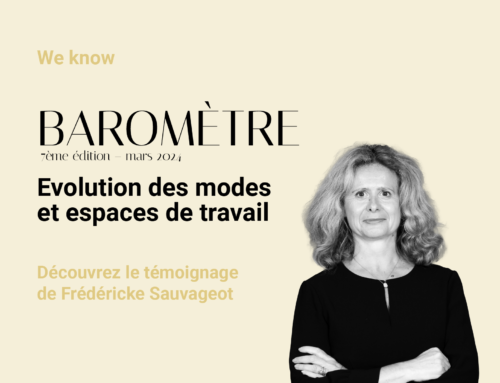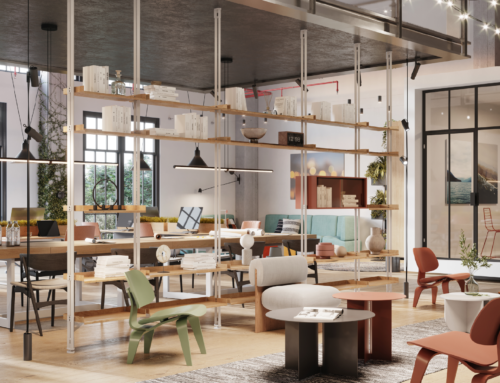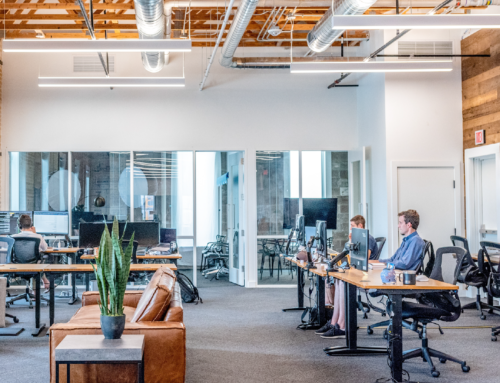What future for EHPADs?
Today, Parella Valuation decodes for you the EHPAD (Establishments of accommodation for dependent elderly people), formerly called retirement homes. In the world of healthcare real estate, EHPADs represent a singular type of asset. They were brought to the forefront by a media scandal in early 2022, but are still not well known by real estate professionals.
As a key health care asset in recent years, can today's EHPAD continue to exist tomorrow?
The evolution of care for the elderly
of the elderly in France
of the elderly in France
The emergence of medical establishments for the elderly in the territory
Residential establishments for dependent elderly people (EHPAD) are medicalized establishments, welcoming dependent elderly people. They take care of residents who have lost their autonomy (physical or cognitive).
Initiated in the Middle Ages through religious hospices, the first real structure to house the elderly was built in Paris in 1783 under the name "Maison Royale". Lay hospices developed in the 20th century: more inclusive and mixed, they became the retirement homes we know today.
The different types of medicalized accommodation for the elderly
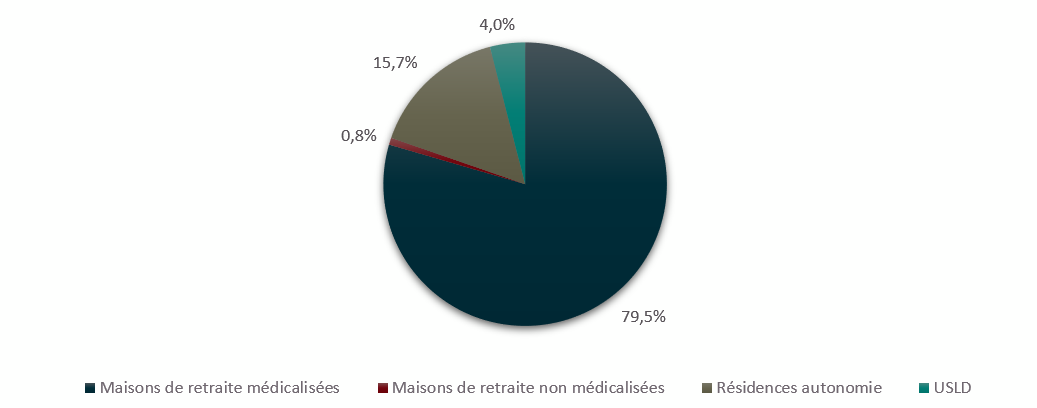
Source: Statiss 2019, data as of December 31, 2019 in metropolitan France
The legal framework of EHPAD
It was not until the law of January 2, 2002 on social and medico-social action that the status of medicalized retirement homes was profoundly modified. Following this new regulation, they became "Etablissements d'Hébergement pour Personnes Agées Dépendantes" (EHPAD).
To be admitted to an EHPAD, the future resident must meet two conditions:
- Be at least 60 years old.
- Requires daily care and assistance to perform daily living activities.
GOOD TO KNOW
There are three types of medicalized accommodation for the elderly: EHPADs, USLDs and independent residences. Long-term care units (USLD) are medicalized structures. They take care of people whose condition requires constant supervision by the staff. The independent residences are medicalized establishments for autonomous elderly people. They are composed of individual housing and shared spaces.
The necessary development of EHPAD
In 2021, almost 27% of the French population was 60 years or older, representing 17.7 million individuals. According to INSEE projections, this share should increase to 24.4 million French people in 2050, or 35% of the population.
Adapting to the growing number of seniors, the number of facilities has increased considerably in recent years. In 2021, France had 7,503 EHPADs with a capacity of over 600,000 places. Projections for 2050 estimate that 319,000 additional places will be needed to meet the demand.
A "safe haven" asset against market fluctuations?
Managers facing a "scissor" effect
In 2020, this asset class was doubly impacted:
- First, 224,500 EHPAD residents were affected by Covid-19 (37.5%), of which 29,300 died (4.9%). Despite the effectiveness of the vaccination campaign, the health crisis had a significant impact on occupancy rates. Reaching 98% in 2019, it lost 800 basis points and was only 90% the following year.
- In addition, professionals in the sector are faced with a generalized increase in all their expenses. Personnel costs, energy expenses, foodstuffs and medical supplies have all undergone strong inflation since 2020. The increase in costs, correlated with the decrease in the occupancy rate, has largely contributed to the impact on the results of EHPADs. In addition, the low rate of revaluation of accommodation services (+0.46%) in 2021 has restricted their revenues. As a result, revenue growth for these real estate assets was limited to +1.1% in 2021.
GOOD TO KNOW
EHPAD revenues are based on three main sources of income:
- The accommodation rate alone represents approximately 50% of the resources of private commercial EHPADs.
- The budget allocation for the care needs of residents, which represents approximately 30% of the resources of private commercial EHPADs.
- The budgetary allocation corresponding to the care of residents' dependence, representing approximately 20% of the revenues of private commercial EHPADs.
The top 5 EHPAD operators in France in 2021

Source: Xerfi according to operators and the Registries of the Commercial Courts
Despite this context, this type of asset remains attractive to investors.
The boom in healthcare real estate investments
While 2019 was not a dynamic year for investment, with only €132 million invested in EHPAD due to the low number of transactions (5), 2020 concentrated €242 million of investment, despite the health crisis. This upturn in activity is justified by the attractiveness of the healthcare market compared to other real estate assets. Indeed, the high occupancy rate, correlated with secure rents and regular cash flows, make nursing homes an attractive real estate product.
2021 marks a strong recovery from the health crisis. France has taken 4th place in the European ranking of healthcare real estate investments. 1.4 billion was invested during the year. Nursing homes remain a key asset, accounting for 43% of investment volumes, or €600 million.
450 million was committed to healthcare assets in France in the first six months of 2022, confirming the trend observed in recent years.
Distribution of healthcare real estate investments on a European scale.
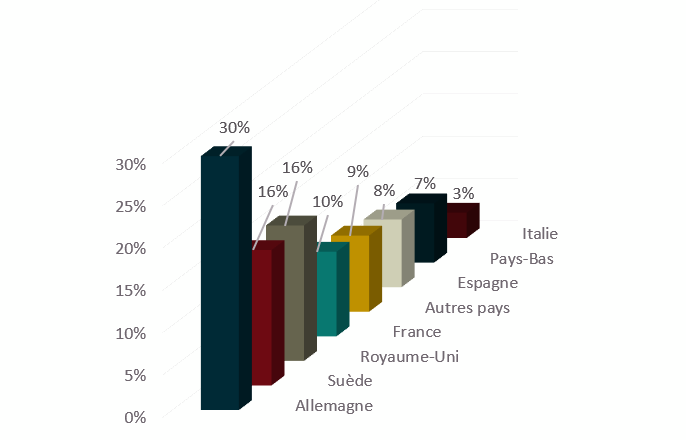
The key criteria for securing an investment in EHPAD :
Residential facilities for the dependent elderly show a certain resilience in the face of economic and social conditions. They are therefore an attractive investment.
It is essential for investors to consider certain key criteria before purchasing this real estate product:
- It is advisable to select a recognized operator with an international dimension.
- Choose a location in an area where the purchasing power of future residents is relatively high.
- Favour a location in the heart of the city, close to food shops and with good access.
- Prioritize structures with quality technical services and a varied range of services.
The scenarios envisaged for the future of the EHPAD
Future results to be qualified
For the main operators of EHPAD, annual revenues are expected to reach 4 billion euros in 2022.
Private nursing home managers have also taken advantage of price increases for their accommodation services (around 2% in January 2022) to boost their revenues, with Xerfi anticipating an increase in revenues of 3% in 2022. This increase is expected to continue in 2023, at 2%.
Evolution of the turnover of EHPAD operators (forecasts for 2022 and 2023)
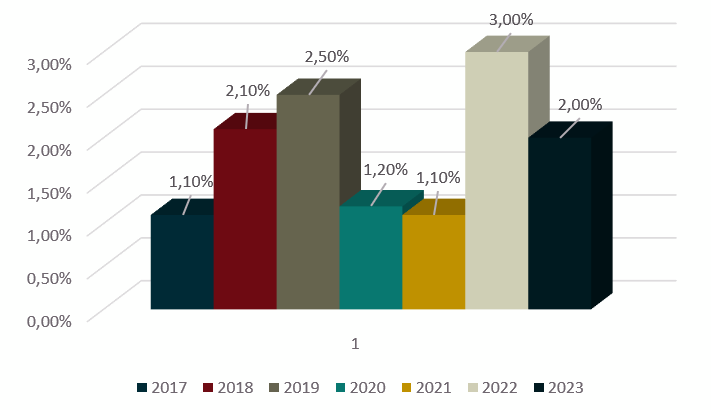
However, managers are not expected to return to their pre-crisis performance, with an EBITDA rate in 2022 that is lower than that observed in 2019 (9% vs. 10.6%).
In terms of investments, the healthcare segment should see its volumes consolidate in 2022. We should expect volumes to stagnate in 2023, mainly due to the wait-and-see attitude of investors.
The main investors in EHPAD in France are concentrated around real estate companies and asset managers. Among the leaders in the sector are Icade Santé, Primonial, Cofinimmo, Euryale and BNP.
The prime yield in this segment of healthcare real estate was around 4% in Q4 2022. However, as with most commercial real estate assets, we should see a relatively significant decompression in 2023.
Organizational and structural challenges
Approximately 400,000 people are currently employed in one of the 7,503 EHPADs in France. Already facing a shortage of staff before the health crisis, the pandemic has only added to the strain on staff. Normally there is one caregiver for every elderly person, but the ratio is currently 0.6. The direct consequence of this lack of staff is that managers are faced with the following:
- An impact on the quality of services
- Upward pressure on wages
- Bed closures
Several leaders have taken initiatives to address this recruitment issue. Like Korian, which launched a professional retraining program in early 2021 for employees of the Derichebourg and Monoprix groups, in parallel with the creation of a training center. New arrangements are expected in the near future.
Added to this shortage was the publication of a book-investigation in 2022, denouncing anomalies and cases of mistreatment within various establishments belonging to a leading group in the market. The case was taken to court, tarnishing the image of the sector in the eyes of the general public. The State subsequently committed to tightening controls: all EHPADs will have to be inspected by the end of 2024.

A proposal was even initiated by the Social Affairs Commission of the National Assembly, inviting to legislate by no longer approving EHPADs that had not "signed an agreement with the health, social and medico-social actors in their territories and that do not offer a package of services that are widely accessible, both to elderly people living in institutions and to those living at home".
The reinforcement of inspections in EHPAD should force these establishments to undergo an in-depth transformation. Services, quality of life and support will be key criteria for future residents of these facilities.
The EHPAD of tomorrow
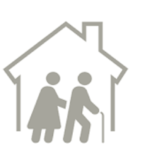
In the wake of the health crisis and the media scandal, the "all EHPAD" model is coming to an end. Parella has asked itself what the EHPAD of tomorrow will be, and offers you some thoughts.
- The Home-EPHAD
With the ever-increasing desire of the French to age at home, the EHPAD of tomorrow will be partly at home. Allowing a reduction in accommodation costs, the EHPAD "outside the walls" will guarantee a unique offer to the patient. Home care gives individuals the possibility to apply for the Allocation Personnalisée d'Autonomie, as well as to benefit from a tax credit for personal services provided. Korian and DomusVi have also launched home assistance platforms and agencies to support seniors who are losing their independence.
- Smart-EPHAD
Digitalization should also be fully integrated into the environment of these facilities for the elderly. Connecting families with residents, digital technology helps to maintain the link between them. EHPADs now communicate on their daily life, through social networks and applications. These new transmission channels are destined to become more widespread, being moreover a guarantee of confidence in the well-being of the residents for the families.
- Hybrid EPHADs
Alternative modes of care for seniors are also in demand. These "hybrid" establishments should see accelerated development in France. Combining senior residences, inclusive residences or even social housing, tomorrow's establishments for the elderly will be oriented towards social and intergenerational diversity.
- Co-constructed EPHADs
Finally, the new establishments should benefit from a design where user satisfaction is at the center of the reflection. As with certain office assets, the EHPADs of tomorrow will be co-constructed: we can easily imagine the collaboration of residents, but also of caregivers in the architectural design of the buildings.
To conclude
Nursing homes are relatively secure real estate assets that are resilient in the face of crises. Nevertheless, the pandemic has had a considerable impact on the operating methods of these establishments. Already underway for several years, the scandal has further accelerated the transition from all EHPADs to a richer offer, with alternative accommodation to traditional retirement homes. Korian's takeover of senior colocation specialist Âge & Vie in 2018 signed the beginning of the diversification of the giants, which are increasingly interested in alternative solutions such as senior residences, coliving for independent seniors or home care services.
The EHPAD of today, in order to survive in the years to come, must change its model. It will have to be turned towards the well-being of seniors, by increasing the means granted to the structures welcoming them (construction, personnel, alternative modes).
As recalled in the flash mission of the Social Affairs Commission of the National Assembly,
The EHPAD of tomorrow is above all a place of life where we care and not a place of care where we live.
In 2022, Parella Valuation assisted various market leaders in determining the rental and market values of EHPADs throughout the country.
What are the characteristics inherent in the valuation of an EHPAD in 2023? A Parella Valuation real estate expert will be able to advise you on the valuation of these assets.
Benefiting from its know-how in healthcare real estate, Parella Valuation also evaluates senior citizen service residences, clinics (MCO/SSR), or healthcare centers. Our expertise can also be applied to more singular assets, such as inclusive residences combining different types of facilities (residences offering housing for independent seniors, housing for people with disabilities, social housing, etc.).
Follow us on Linkedin to benefit from the next articles, between deciphering and market views of our experts.
Sources
- A, Y. (2022, December 18). What is an Ehpad? Cap Retraite - choosing a place in a retirement home / EHPAD.
- Ehpad : accommodation establishment for dependent elderly people. (2023, January 1). Service-public.fr.
- Hayek, J. (n.d.). Accelerated history of EHPAD.. Ehpadia, the magazine for EHPAD leaders.
- Number of retirement homes France 2021 | Statista. (2022, May 13). Statista.
- Population projections 2005-2050 - Population aging in metropolitan France - Économie et Statistique n° 408-409 - 2007 | Insee. (n.d.).
- France Figures Santé 1Q 2022. (n.d.). CBRE France.
- HEALTHCARE REAL ESTATE INVESTMENT IN EUROPE, FOCUS ON RETIREMENT HOMES (2021/2022 REPORT). (2021). cushmanwakefield.com.
- Lepercq, V. (2022, December 8). Commercial real estate: the most buoyant assets in 2023. Les Echos.
- Pierval Santé - 2019 Annual Report. (2020). euryale-am.fr.
- Real estate and life cycle: individual and collective residences | Primonial REIM. (n.d.).
- National Assembly. (n.d.). Mission flash sur l'EHPAD de demain : quels modèles ? - National Assembly.
- D. (2022, February 7). EHPAD DEMAIN: The quest for a new model. A2MO.
- THE EHPAD OF THE FUTURE BEGINS TODAY - Grey matter. (2022, May 24). Grey matter.
- O. (2021, June 16). How to explain the decline in the occupancy rate in EHPAD? Observatoire des seniors.
- Ehpad staff on the verge of breakdown: how did it come to this? (n.d.). Le Mag du Senior.

